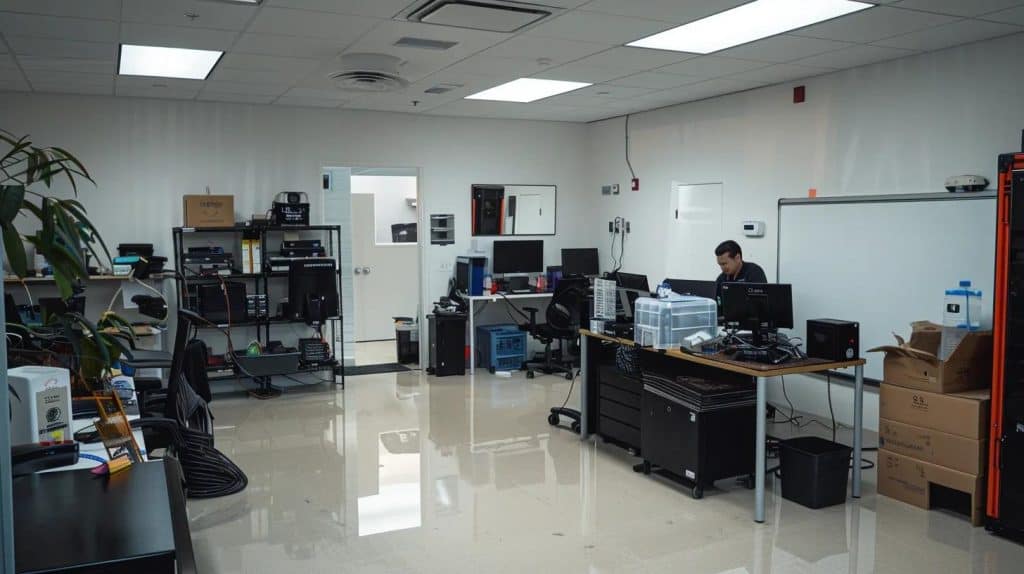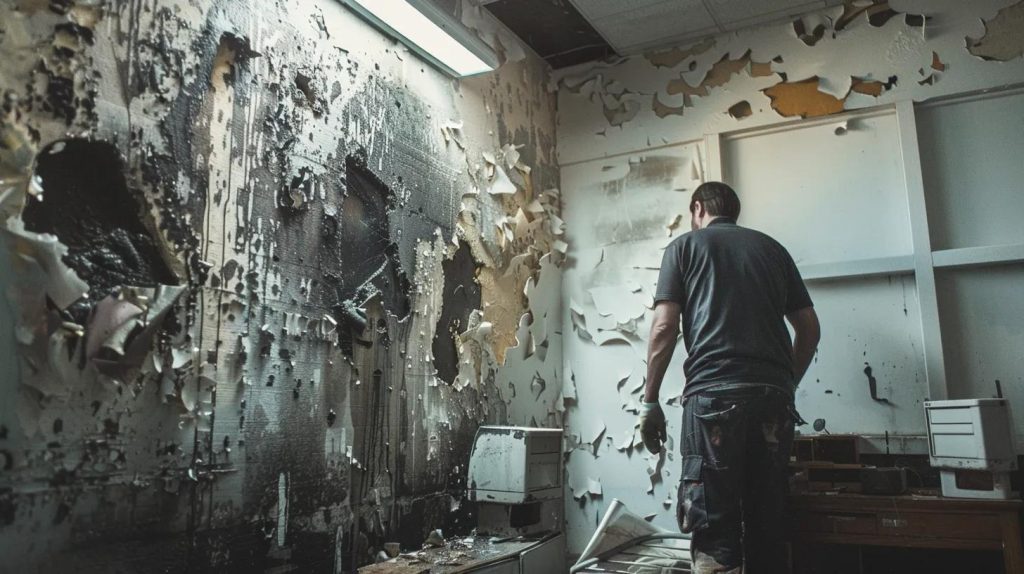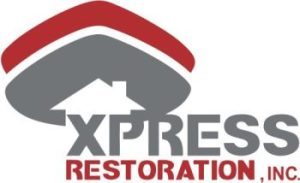Expert Water Damage Restoration Services in San Diego
San Diego residents face unique challenges when it comes to water damage. Whether from heavy rains, burst pipes, or unforeseen flooding, water damage can threaten the structural integrity and safety of residential and commercial properties. Xpress Restoration, a trusted emergency service provider in San Diego, specializes in mitigating and repairing water damage to restore properties to a safe condition. restoration xpress is recognized for its rapid response and expertise in handling such emergencies. This article examines water damage restoration services in San Diego, outlining key processes, the role of certified technicians, and important tips for property owners. It also highlights how local weather, building codes, insurance, and transparent pricing influence restoration work. Understanding these aspects emphasizes the need for immediate professional intervention to repair damage and prevent mold and other health hazards.

The Vital Role of Water Damage Restoration Services in San Diego
Water damagerestoration involves water extraction, drying, cleaning, and sanitizing to return a property to its pre-damage state. In San Diego, where occasional heavy rainfall and coastal flooding occur, these services are vital. They not only repair visible damage but also address hidden moisture problems that can lead to mold growth, structural deterioration, and compromised indoor air quality. Early assessment and prompt cleaning help prevent long-term damages that might otherwise escalate quickly.
What Does Water Damage Restoration Include?
The restoration process typically consists of: • Water extraction using industrial-grade equipment • Drying and dehumidification to lower moisture levels • Cleaning and sanitizing surfaces • Restoration work to repair or replace damaged structures Technicians may also perform structural repairs such as replacing drywall or refinishing wood floors. Antimicrobial treatments are applied to inhibit mold growth. Constant monitoring during drying ensures moisture levels remain safe, preventing future issues.
How Does San Diego’s Climate Affect Water Damage Risks?
Although San Diego is known for its mild climate and coastal breezes, the region still experiences heavy rains, coastal flooding, and storm surges—especially in winter. Older properties with outdated plumbing and drainage systems are particularly vulnerable. Salt air and humidity can also accelerate the deterioration of building materials. Routine maintenance and timely intervention are crucial, as even minor leaks or drainage issues may quickly lead to significant damage.
Why Is Immediate Water Damage Restoration Critical?
The longer water remains, the greater the damage. Delaying restoration can foster mold and bacterial growth, compromising air quality and the structure. Immediate intervention minimizes structural damage, protects belongings, and reduces overall repair costs. Professional services use advanced equipment to extract water and complete the drying process quickly, helping to safeguard market value and occupant well-being.
How Do Certified Technicians Restore Water-Damaged Properties in San Diego?

Certified technicians are essential in restoring water-damaged properties. Their specialized training, certifications, and advanced tools enable them to assess damage and remove hidden moisture. Their expertise helps prevent further problems such as mold infestation and structural instability.
What Certifications and Training Do San Diego Restoration Experts Have?
Technicians in San Diego typically hold certifications from organizations like the Institute of Inspection, Cleaning and Restoration Certification (IICRC). Their rigorous training in water damagerestoration, mold remediation, and environmental cleanup ensures safe handling of hazardous materials. Regular continuing education enables them to keep pace with evolving technologies and methods, ensuring compliance with the latest safety standards.
What Are the Key Steps in Water Extraction and Drying?
The process begins with a detailed inspection to identify visible and hidden water pockets. Technicians then use powerful extractors and submersible pumps to remove water from the area. Industrial dehumidifiers and air movers follow to reduce moisture levels and facilitate complete evaporation from building materials. Moisture meters monitor progress to ensure areas are optimally dried before cleaning and restoration proceed.
How Is Mold Remediation Handled After Water Damage?
After drying, technicians inspect the site for mold in areas that might not be visible, such as behind walls or under flooring. They use antifungal treatments and sealants to neutralize spores and prevent mold proliferation. Contaminated materials that cannot be fully cleaned are removed, while remaining surfaces are disinfected using EPA-approved agents. This proactive approach improves indoor air quality and protects the health and integrity of the property.
How Can You Access 24/7 Emergency Water Damage Restoration Services in San Diego?
In emergencies, quick access to water damagerestoration is crucial. San Diego restoration companies operate 24/7 to minimize further damage and reduce personal risk. Their round-the-clock teams ensure that affected properties begin the restoration process as soon as possible, limiting secondary issues such as mold or extensive structural deterioration.
What Is the Typical Response Time for Local Restoration Companies?
Response times in San Diego are typically within one to two hours of a service call. This rapid response allows technicians to assess and contain the damage swiftly, set up extraction equipment, and begin drying. Quick intervention not only reassures property owners but also helps lower repair costs by preventing additional degradation of building materials.
How Do Emergency Services Minimize Property Loss?
Emergency restoration services rapidly extract water and dry affected areas, reducing the likelihood of structural damage and mold spread. Technicians also document damage meticulously, which supports accurate insurance claims. Combining swift action with professional cleanup minimizes property loss and reduces the financial burden on property owners.
What Should You Do Immediately After Water Damage Occurs?
Upon discovering water damage, immediately: • Turn off the main water supply • Disconnect electrical appliances to avoid hazards • Document the damage with photos or videos • Contact a reputable restoration company These actions help reduce water damage extent and prevent mold growth, safeguarding both property value and occupant health.
What Are the Costs and Insurance Options for Water Damage Restoration in San Diego?

Restoration costs can vary based on the extent of damage, methods used, and the affected area’s size. Minor damage may cost a few hundred dollars, while extensive damage can run into thousands. Insurance plays a major role in offsetting costs; many policies cover water damage, although specifics depend on policy terms and the cause of the damage. Transparent pricing from companies like Xpress Restoration helps property owners understand costs and plan financially.
How Is Transparent Pricing Structured for Restoration Services?
Transparent pricing is typically broken down into: • Water extraction • Drying and dehumidification • Cleaning and sanitizing • Necessary repair work Written estimates provide a clear outline of labor, equipment, and material costs. This clarity builds trust and assists in negotiations with insurance providers.
How Can San Diego Residents Use Insurance for Water Damage Claims?
Residents should review their policy details to know what scenarios are covered. After damage occurs, timely notification to the insurance company and comprehensive documentation with photos and videos are essential. Restoration companies often help compile detailed reports to ensure that claims are processed smoothly and accurately.
What Are Common Insurance Challenges and How Are They Resolved?
Insurance challenges may include disputes over coverage limits and delayed claim processing. Sometimes insurers classify water damage as a maintenance issue, which could reduce a payout. Detailed documentation from certified technicians and professional reports can resolve these issues. In some cases, homeowners may need independent adjusters or legal guidance to secure a fair settlement.
How Does Local Knowledge Improve Water Damage Restoration in San Diego?
Local restoration companies benefit from extensive knowledge of San Diego’s specific weather patterns, building styles, and regulatory requirements. This awareness enables them to tailor restoration strategies effectively. Their familiarity with coastal conditions and local building codes ensures repairs are compliant and suited to the unique challenges of the area.
What Building Codes and Regulations Affect Restoration Work?
San Diego building codes ensure properties meet safety and quality standards. Restoration work, including structural repairs and material replacements, must adhere to these regulations. Compliance with current codes guarantees durability and safety while expediting permit processes and reducing potential legal issues.
How Do Local Water Damage Causes Influence Restoration Strategies?
Causes of water damage in San Diego can include heavy rains, coastal flooding, sewage backups, and plumbing failures in older structures. Local experts can identify these sources quickly and recommend tailored solutions—such as improved drainage or preventive maintenance—to mitigate immediate damage and reduce the risk of future occurrences.
Why Choose a San Diego-Based Restoration Company?
Local companies, such as Xpress Restoration, offer the dual benefits of prompt service and specialized local expertise. Their understanding of regional building styles and common damage scenarios allows them to provide effective, compliant restoration solutions. This local focus results in faster emergency response, smoother insurance processing, and long-term preventive recommendations.
What Are the Signs You Need Professional Water Damage Restoration in San Diego?

Recognizing when professional restoration is needed is crucial to prevent lasting damage. While visible signs like water stains, warped flooring, or bubbling paint are clear indicators, hidden damage may exist behind walls or beneath flooring. A professional inspection can reveal underlying issues not apparent to an untrained eye, helping to avert significant long-term damage.
How to Identify Hidden Water Damage and Mold Growth?
Hidden water damage can be detected using moisture meters and infrared cameras, which reveal damp areas behind walls and under floors. Warning signs such as a musty odor, sudden increases in utility bills, or peeling paint in less-visible areas may indicate concealed moisture and mold growth. Early and thorough inspections are vital for preventing extensive damage and health issues related to mold exposure.
When Is DIY Cleanup Insufficient?
DIY methods might suffice for small spills, but when water penetrates carpets, subfloors, or walls, professional intervention is necessary. DIY approaches often fail to remove all hidden moisture, resulting in recurring problems and mold growth. Professionals use specialized equipment to remove water completely, dry structures thoroughly, and sanitize the area to prevent future issues.
What Health Risks Are Associated With Untreated Water Damage?
Untreated water damage can lead to mold and bacterial proliferation. Mold releases spores and mycotoxins which may cause respiratory issues, allergies, or infections, while stagnant water can harbor harmful bacteria. These hazards not only compromise the building’s structure but also pose serious health risks to occupants. Prompt professional remediation is therefore essential.
How Can You Prevent Future Water Damage in San Diego Homes and Businesses?
Prevention involves proactive measures and regular maintenance. Homeowners and business operators should routinely inspect roofs, gutters, and plumbing systems to catch leaks early. Proper sealing and waterproofing of basements and foundations further reduce the risk of water intrusion during storms or floods. Regular preventive maintenance ensures the longevity of a property and helps avoid expensive emergency repairs.
What Maintenance Tips Reduce Water Damage Risks?
Maintaining a property involves: • Regular roof, window, and gutter inspections • Cleaning and unclogging gutters • Repairing damaged roof shingles • Sealing windows and doors properly Periodic professional evaluations can also detect hidden issues, ensuring that minor leaks or insulation problems are addressed before they escalate.
How Do San Diego Weather Patterns Affect Prevention Strategies?
Even mild coastal weather can produce heavy downpours and seasonal storms. Effective strategies include ensuring that drainage systems are clear and up-to-date, applying waterproofing measures, and designing landscapes to divert water away from structures. Local recommendations might also include installing water sensors that alert homeowners to leaks in real time.
What Technologies Help Monitor and Detect Water Leaks Early?
Modern smart devices such as moisture sensors, smart water shut-off valves, and remote monitoring systems offer early detection of leaks. These technologies integrate with home automation systems to immediately alert property owners, allowing for quick action that minimizes damage and reduces repair costs.
Frequently Asked Questions
Q: What immediate steps should be taken after water damageoccurs? A: Turn off the main water supply, disconnect electrical systems, document the damage with photos, and contact a professional restoration company immediately.
Q: How long does the water extractionprocess typically take? A: Depending on the damage, extraction can take several hours to a full day. Professional teams use high-capacity equipment to ensure the drying process can follow promptly.
Q: Can my insurance cover the full cost of water damagerestoration? A: Most policies cover water damage, though specifics vary. Review your policy and work with your restoration provider to document damage accurately for your claim.
Q: What are common signs of hidden water damage? A: Look for a musty odor, peeling paint, warped flooring, and unexplained increases in utility bills. Hidden leaks behind walls or under flooring often require professional inspection.
Q: How can regular maintenance reduce the risk of water damage? A: Routine cleaning of gutters, regular roof inspections, and proper sealing of windows and doors can prevent water intrusion and address minor issues before they become severe.
Q: Are smart devices effective in preventing future water damage? A: Yes, smart water sensors and automatic shut-off valves provide early detection and rapid response, integrating with home automation systems for added peace of mind.
Q: How do local weather patterns in San Diego influence restorationstrategies? A: Even with mild weather, seasonal heavy rains and coastal conditions demand tailored drainage and waterproofing solutions, designed by local experts familiar with the region.
Final Thoughts
Water damagerestoration is critical for maintaining the safety and integrity of San Diego properties. Quick intervention, professional expertise, and local knowledge work together to ensure effective restoration. Property owners should invest in regular maintenance and modern preventive technologies to reduce risk and protect their investments. Xpress Restoration offers 24/7 emergency response, certified expertise, and transparent pricing, making them a trusted partner in safeguarding communities against water-related disasters.

